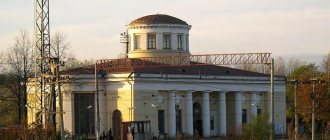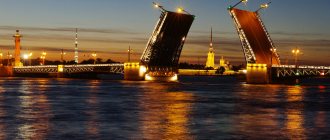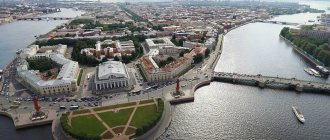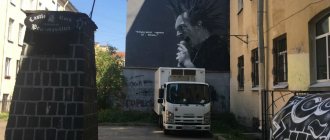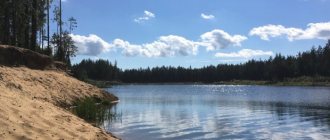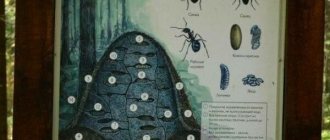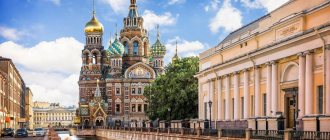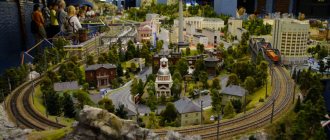More than 8,000,000 tourists visit the northern capital of Russia every year. To get the most complete picture of impressions, as well as to save time and money for St. Petersburg guests, interesting excursions to the suburbs of St. Petersburg are organized for them, that is, for you.
This page contains the 20 best excursion tours of 2021, which you can book and plan your busy vacation in advance. The selection includes the best walks to explore the main attractions of the Leningrad region for adults and children.
Let's get acquainted with the suburbs of St. Petersburg?
To Peterhof
The unique residence of Peter the Great takes first place in the top places to visit. Organized excursions will help you get to the place, skip the queue to the park and learn all the secrets of building a complex system of fountains.
Bus group excursion to Peterhof with a visit to the park
Every day there is a 6-hour “Bus group excursion to Peterhof with a visit to the park” for everyone. Comfortable transport will take you from the city center to the famous residence of Peter the Great.
Peterhof is not only palaces and fountains...
The price includes round-trip delivery, a fascinating story from the guide and a ticket to the park; payment for all the pleasures is 1,700 ₽ per person.
Photo excursion “Peterhof - the capital of fountains”
It’s easy to book a sightseeing tour on the Internet, and then quickly take the train to the suburbs of St. Petersburg. Here you will find a fun and educational “Photo tour “Peterhof - the capital of fountains”.
Take with you both memories and wonderful photographs.
A professional guide will introduce you to the history of the park and take ≈ 100 memorable photographs, and children will enjoy the fun in the trick fountains. The price for a 2.5-hour excursion and photo is 11,000 RUB for a group of up to 6 people.
To Peterhof on Meteor and Lower Park without queues
One of the best excursions to the suburbs of St. Petersburg is the trip “To Peterhof on a meteor and Nizhny Park without queues.” In 30 minutes you will reach the famous residence of the Russian Tsars. On the way you will see the Neva, the Finnish Wave and bridges under which you need to make a wish.
Let's go to the residence of the Russian Tsars by the fastest and most convenient transport - on the Meteor.
Payment for a comfortable trip and a skip-the-line ticket to the Lower Park of Peterhof is 1,400 ₽ per passenger.
Feedback from the Shadrin family about the meteor excursion to Peterhof:
“I liked the trip, it seemed like we arrived in 5 minutes. My husband and I sat in different places (they didn’t specify this when boarding), but this did not spoil the trip. I admired the Neva on the deck, and my husband had a snack and drank beer in a cafe. The territory of Peterhof amazed us with its scale, we walked for a long time (we didn’t want to leave), hand-fed squirrels with nuts, and rode on a train. I praised myself for bringing extra water and food and only bought treats for the squirrels in the park.”
The first day
Tsarskoe Selo - creative mood
Photo: Ekaterina Timakova
The imperial country residence is not inferior to the Winter Palace either in size or in elegant decoration. In the three parks of the museum-reserve you can find colonnades entangled with vines, a Chinese village, a jagged white tower and a neo-Egyptian pyramid. In all this mixture of styles, the baroque facade of the Catherine Palace regally dominates. One of its wings became the cradle of Russian poetry. The Tsarskoye Selo Lyceum was located here, where Alexander Pushkin grew up. The excursion shows the poet's room, his diary, drawings, and reviews in the magazine.
Music for a walk: Franz Schubert.
Time to explore without the palace : at least 3 hours for the park and an hour for the Lyceum.
Ticket price: park - 150 rubles*. Palaces and museum-lyceum A.S. Pushkin - additionally.
How to get there from St. Petersburg : from the Moskovskaya metro station - minibuses 342 and 545, from the Kupchino metro station - minibuses K-545a, K-286, K-287 and K-347a. Travel time will be from 30 to 40 minutes.
The journey by car will take approximately 40 minutes and you will have to travel about 30 km. Renting a car in St. Petersburg for a day costs about 2,500 rubles on OneTwoTrip*.
Pavlovsk - romantic mood
Photo: Ekaterina Timakova
Antique statues shyly hide in the nooks of shady alleys. Openwork bridges span the thin Slavyanka River covered with duckweed. If you take a wrong turn, you will stumble upon the ruins of an amphitheater or family tombs under the eternal canopy of poplars. On a thoughtful walk, you can look for “The End of the World” - the obelisk farthest from the main entrance. The melancholic charm of the park is only slightly disturbed by the golden-white Pavlovsk Palace and fat, impudent squirrels begging guests for delicacies.
Music for a walk: Robert Schumann.
Time to visit without the palace : from 1 to 3 hours.
Ticket price: park - 100 rubles on weekends, on weekdays - free*. Palace - additionally.
How to get from St. Petersburg: from Vitebsky station by train to Pavlovsk station, the journey will take about 40 minutes. You can also get there by minibuses 299 and 545 from the Moskovskaya metro station. Travel time is a little over an hour.
The journey by car from Tsarskoe Selo to Pavlovsk will take about 15 minutes.
To Kronstadt
The hero city of Kronstadt is on the UNESCO World Heritage List. Go and see the unique historical sites of the legendary fortress on Kotlin Island. Check out the schedule of excursions and book a tour online; on the spot you will learn a lot of interesting things from the heroic history of Russia.
Kronstadt - St. Nicholas Cathedral and Petrovsky Dock
On a comfortable bus you will get to the port city in the Gulf of Finland. The excursion “Kronstadt - St. Nicholas Cathedral and Petrovsky Dock” will take about 6 hours along with the road.
During this trip you will see the main attractions of Kronstadt.
During this time, the guide will introduce you to the main attractions and reveal 100 secrets of the invincible city. Payment with delivery - 1250 ₽ per traveler.
Kronstadt with a boat trip
Pay attention to the 6-hour excursion “Kronstadt with a boat trip”. By bus you will travel along a 25.4 km long dam and get acquainted with the historical sites of Peter’s second brainchild.
These are the things that will meet you on the way!
In the finale, take a boat ride along the Gulf of Finland and see the legendary city forts. The cost of this intense tour is 1,700 RUR per guest.
Forts of Kronstadt
The walking tour “Forts of Kronstadt” will take 1.5 hours. From a knowledgeable guide you will learn what role the heroic forts played in the fate of St. Petersburg and all of Russia.
To better understand the history of Kronstadt, you need to get acquainted with its forts.
Payment for a trip to the past is 2500 ₽ for a group of up to 10 people.
Motorcycle trip to Kronstadt
For lovers of mild extreme sports, a 2-hour “Motorcycle Walk to Kronstadt”. A professional driver will pick you up from the center of St. Petersburg, rush along the dam with the breeze and introduce you to the sights of the hero city.
Fast and noisy travel on a motorcycle.
The excursion runs until October 27, payment is RUB 4,000 per passenger.
PUSHKIN
Pushkin, better known by its old name - Tsarskoe Selo, associated with the biography of the most famous Russian poet. In this city there is the famous Tsarskoye Selo Lyceum, where Alexander Sergeevich studied. It is also home to the luxurious Catherine Palace, the imperial summer residence and a UNESCO World Heritage Site. The whole world knows the story associated with the disappearance of the Amber Room. Let us remind you that the original Amber Room, which was stolen by the occupiers during the Second World War, was never found. However, it was completely reconstructed, and today you can admire the decoration and decoration of the Amber Room, recreated with amazing precision and skill.
Catherine Park in Tsarskoe Selo is a unique monument of Russian garden art. The layout of its landscape is based on regular and landscape styles. The Great Catherine Palace is surrounded by picturesque alleys, ponds, canals, pavilions and sculptures. The park is so beautiful that in good weather you don’t want to leave it for a long time.
You can find out how to get to Tsarskoe Selo here.
To Strelna
Another major project of Peter the Great is located in the suburban village of St. Petersburg - Strelna. Go to Russian Versailles with a tour group, see what palace the great emperor gave to his beloved daughter Elizabeth.
Excursion to Strelna and the Konstantinovsky Palace
The fascinating 5-hour “Excursion to Strelna and the Konstantinovsky Palace” takes place on Tuesdays, Thursdays and Sundays. The bus will pick you up from Nevsky Prospekt, travel around all the historical places of the village and stop at the Konstantinovsky Palace.
The Konstantinovsky Palace is beautiful.
The road, entrance tickets and a fascinating story from the guide are included in the price of the tour - 2200 ₽ per person.
To Pushkin (Tsarskoye Selo)
Just half an hour by train or bus, and you will be transported back in time 2 centuries ago. We invite you to take this adventurous journey together with a guide and get acquainted with the historical sites of Tsarskoe Selo.
Walk through the streets of Pushkin
“Walk along the streets of Pushkin” will help with moving for 3 hours to the repository of Russian heritage.
Uncover the secrets of ancient buildings and feel the spirit of poetry and beauty reigning in the city.
You will see the Nikolaev gymnasium, the banknote factory and the imperial garage. The cost of the trip is 2250 RUR for two or 855 RUR per person if there is more of you.
Unknown Tsarskoye Selo
A corner of ancient Rus' and a Chinese village await you on an excursion to the “Unknown Tsarskoe Selo”. In 2 hours you will walk along non-tourist paths and see the royal residence from a different angle.
During a walk around Tsarskoye Selo you will see its main historical sites.
The cost of traveling with a fascinating story from a guide is from 2,600 rubles for two or 1,000 rubles each if your group is larger.
To Pavlovsk
In December 1777, Catherine the Great gave the future Emperor Pavel Petrovich land with two villages. The territory was later christened the Pavlovsk village, on the site of which the magnificent residence of the imperial couple grew.
Exit bus tour to Pavlovsk (Pavlovsk Palace)
Take note, “Outdoor bus tour to Pavlovsk (Pavlovsk Palace)” takes place on Tuesdays and Thursdays.
Pavlovsk Park is one of the largest landscape parks in the world.
In 6 hours you will get to the place on a comfortable bus and have time to see one of the largest landscape parks in the world. The price of 1,700 ₽ per person includes tickets to the emperor's residence.
Individual excursion to Pavlovsk by minivan
A company of up to 7 people can order an “Individual excursion to Pavlovsk by minivan.” This is a 5-hour journey to one of the most romantic suburbs of St. Petersburg.
The park ensemble of Pavlovsk is fascinating.
The program includes a visit to a masterpiece of park art and sightseeing of the imperial estate. The cost of the trip is 8700 ₽ for the entire group.
PAVLOVSK
Pavlovsk is the imperial residence of the Romanovs, associated with the name of Paul I. Most of the city is occupied by a palace ensemble with a landscape park. Despite the fact that the Great Palace of Pavlovsk was badly damaged during the war, it was completely restored back in 1970 and occupies a worthy place among the country residences of the royal family. When exploring the interiors of the palace, do not miss the Italian Hall. It contains a rich collection of ancient sculpture; It is also worth visiting the art gallery with paintings by Italian and Flemish artists.
The unique Pavlovsk Park deserves a long walk. It is considered one of the best examples of landscape park style in Europe. Its territory is quite vast, about 600 hectares, so we recommend that you rent a bicycle. Pay attention to such park attractions as the Apollo Colonnade, the Temple of Friendship and the Pavilion of the Three Graces.
To Gatchina
42 km from the northern capital is a town with a rich historical past. Visit Gatchina as part of a tour group, you will see the natural and architectural wonders of one of the most beautiful suburbs of St. Petersburg.
Bus excursion to Gatchina
An adventure filled with historical facts is organized by the “Bus Tour to Gatchina”. In 6 hours you will have time to get to the favorite residence of Catherine the Second, see the Gatchina Palace and the adjacent masterpiece of park architecture.
In Gatchina, every building, every stone keeps a story.
Payment for transport, excursion and entrance tickets - 1700 ₽ per traveler.
ORNIENBAUM
Oranienbaum (today the city of Lomonosov) is a country residence of Russian monarchs that survived the Second World War and preserved the historical authenticity of the palace architecture and park landscape of the 18th-19th centuries.
The center of the Oranienbaum palace and park ensemble - the Great Menshikov Palace - is an excellent example of Peter the Great's Baroque. The palace bears the name of its first owner, Peter's associate Prince Menshikov. Later, the palace became the property of Paul III, and then passed to other members of the royal family. In addition to the ceremonial residence of Peter the Great's first nobleman, it is worth seeing the Chinese Palace of Catherine II and the magnificent park.
While walking through the park, do not pass by the Rolling Hill pavilion. It was built according to the design of Antonio Rinaldi for winter entertainment. The elegant building in the Rococo style is only part of a complex engineering structure of ice mountains, galleries and slopes for riding in special wheelchairs during Maslenitsa.
We talked about the most famous suburbs of St. Petersburg, which every person coming to the Northern capital should get to know. A separate article is devoted to how to get to the suburbs of St. Petersburg on your own; we recommend that you read it to choose the optimal route. When planning your trip, be sure to set aside a few days to explore the royal residences in the countryside and walk through picturesque parks. We wish you a pleasant stay!
To Walnut Island
Since the end of the 14th century, the legendary Oreshek fortress has served as one of the main outposts of Russia. The fortress walls saw hundreds of enemy banners and became a place of imprisonment for prisoners of royal blood. Go to Orekhovy Island to see the battlements from which the city was defended during the Leningrad siege.
Oreshek Fortress: secrets of the impregnable citadel
On Tuesdays, Thursdays and Sundays there is an excursion “Oreshek Fortress: the secrets of an impregnable citadel.”
Walnut Island.
A group of up to 25 people will travel by bus to the source of the Neva to move by boat to the heart of the heroic fortress. In 7 hours you will learn the chronicles of the invincible Oreshok, take away memorable photographs, and leave the guide 2100 ₽ per person.
To the Oreshek fortress on motorcycles!
The excursion “To the Oreshek Fortress on Motorcycles” will give you a breeze of travel! Professional drivers will take you as passengers and take you for a 5-hour ride through the historic suburbs.
Shall we ride a motorcycle to the Oreshek fortress?
On the ferry you will move to Walnut Island, spend time in the company of new friends against the backdrop of the legendary citadel. Payment - 8000 ₽ per passenger.
As an argument, Galina Ganina’s review of a motorcycle trip to Orekhovy Island:
“I ordered an excursion on July 19, 2022. The dynamic ride allowed me to get a tan along the way. They picked me up straight from the hotel, drove me around for an hour in comfort and beautiful views, and then transported me by boat to the fortress. An audio guide helped us get acquainted with local sites, and the guys entertained us with their interesting stories. I took home a sea of photographs and positive emotions.”
To Vyborg
A Baltic port, the medieval Swedish settlement today serves as Russia's City of Military Glory. Take this opportunity and combine a trip to St. Petersburg with a visit to Vyborg. Traveling on a comfortable excursion bus will allow you to see the natural beauty of the region and its rich historical past.
Bus excursion from St. Petersburg to Vyborg
The intense “Bus excursion from St. Petersburg to Vyborg” is conducted 5 times a week, with the exception of Monday and Friday.
Not only Vyborg itself awaits you, but also the Mon Repos rock park.
In 10 hours, in the company of a guide, you will get acquainted with an island of European culture. The program includes unique objects of the historical settlement, the rocky reserve of Mon Repos Bay and the most vivid impressions. Payment - 1490 ₽ per person.
Individual auto excursion to Vyborg
Choose an 8-hour trip to the ancient city with a small group that will introduce you to the spirit of a Scandinavian settlement.
Walk along the cobblestones of the ancient medieval streets.
There are more than 300 unique historical objects, the main ones of which will be presented by a knowledgeable guide. Payment for transfer and adventure - 15,600 ₽ for a group of up to 4 people.
Combined excursions
Are you on a business trip to St. Petersburg or have a short vacation? Choose concentrated excursions - three in one. On the bus you will rush through iconic places, and the guide will tell you the most interesting stories about the suburbs of St. Petersburg.
Big trip - Peterhof, Kronstadt and Fort Constantine
In a 10-hour bus and walking tour, you will complete the “Great Journey - Peterhof, Kronstadt and Fort Constantine.”
In one day, explore three fabulous places at once and learn everything about how Peter I conquered the Northern Sea.
You will find historical places that St. Petersburg residents are proud of, as well as stories about how Peter the Great conquered the northern sea of Russia. The price of the adventure is 1890 RUR per passenger.
In the footsteps of the emperors: Tsarskoe Selo, Pavlovsk and Gatchina
Choose the 10-hour excursion “In the footsteps of the emperors: Tsarskoe Selo, Pavlovsk and Gatchina.” The bus will take you to the majestic residences, where you will see the wonders of park architecture and feel like a Russian aristocrat.
The tour will open the doors to the residence of Russian monarchs in the vicinity of St. Petersburg.
The excursion is held on Tuesdays, Thursdays and Saturdays, the fee for transfer and educational adventure is 1890 RUR per participant.
Strelna - Alexandria - Oranienbaum: three imperial residences with an amazing fate
The action-packed 10-hour journey will impress story hunters. The excursion “Strelna - Alexandria - Oranienbaum: three imperial residences with an amazing fate” takes place on Sundays.
Do you want to see how Russian emperors lived?
Hurry up to book a tour to see with your own eyes where the Russian emperors lived. The price of the excursion with transfer is 1890 RUR per traveler.
To complete the picture, Larisa Savelyeva’s review of the excursion tour “In the Footsteps of the Emperors”:
“For a first acquaintance with suburban palaces, a group tour is just right. I was traveling with 2 children and it still wasn’t possible to wander around the parks for a long time. We saw the most interesting things, the guide took into account the age of the children and presented the material with funny jokes. Liked! We will grow up and definitely come again!”
The surrounding area of St. Petersburg has been carefully developed by several generations of Russian emperors. Take advantage of the services of organized excursions to see all the beauty of the St. Petersburg suburbs in a short time and with minimal expenses.
Author: Irina Mamedova
Article last updated: February 3, 2021
Exploration of the suburbs of St. Petersburg, or where I’m unlikely to go to live and why: part one
Guys, this article is not as funny as the previous one, because comparative analysis is a serious thing and is not something to joke about. But, unlike the article about Auntie and Luga, there will be a lot of useful information here. According to my observations, many people who have taken root in St. Petersburg are visited by the same thought over time:
- Oh, how I’m sick of these traffic jams, crowded parking lots, eternal noise, high-rise buildings, three stunted trees under the window and the queue to enter the metro! I'll take it and move from here to the suburbs.
I turned out to be no exception, especially since I had already lived in the suburbs of a big city, and, despite some shortcomings, I liked it. Due to natural curiosity, I have already taken a ride through the tourist outskirts more than once, but only for the sake of sights, without a second thought about how people live there. I started asking my friends, mostly indigenous people, about the suburbs, and once again I became convinced that the majority of native Leningraders do not know the region.
- Oh, you should live in Pavlovsk. There is a palace and a park there. But I don’t know if people actually live there, or if it’s a station for tourists.
- Red Village! Only Krasnoe Selo. There's a lake there! I swam in it as a child. And there were also mushrooms growing nearby. True, I haven’t been there for 20 years.
After listening to a couple more opinions from the same series, I gave up and decided that everything, as usual, should be done myself. To begin with, I stuck my nose into official documents, because I am interested in the suburbs, which are districts of St. Petersburg, and not a region. There is also a lot of good in the area, but this is my criterion. There are only six of these districts:
- Kolpinsky (Kolpino);
- Kronstadtsky (Kronstadt);
- Resort (Sestroretsk, Zelenogorsk and the villages of Roshchino, Komarovo, Beloostrov, etc.);
- Petrodvortsovy (Peterhof, Lomonosov, Strelna);
- Pushkinsky (Pushkin, Pavlovsk, Shushary, Tyarlevo, Aleksandrovskaya);
- Krasnoselsky district, part of which is located inside the Ring Road, and part outside the Ring Road, and this suburban part includes the city of Krasnoe Selo, the villages of Gorelovo, Toriki, Mozhaisky, etc.
I would like to note that the boundaries of the suburbs are not immutable. Everything flows, everything changes. Not long ago, several villages were annexed to Zelenogorsk, that is, the Kurortny district, which increased the load on the local infrastructure and caused discontent among some of the residents.
Suburbs of St. Petersburg
Next, I estimated the selection criteria. Since we are going to change the city to a suburb, then let the suburb be green and more or less environmentally friendly, with a large park. Let there be fewer high-rise buildings and more low-rise buildings. Let there be as few people and cars there as possible. But I didn’t consider villages like Roshchino; a small city would be better: less private sector, more order, better infrastructure, transport. And I really wanted a railway in the suburbs, because when there is none, you will still be stuck in traffic jams from time to time.
In terms of infrastructure, I wanted at least one normal supermarket in the town, not Magnets and Dixie; for the rest you can go to St. Petersburg. To travel to St. Petersburg 1-2 times a week, the suburb should not be too far from the center.
I also wanted the area to have some kind of zest: for example, the shore of the Gulf of Finland or a historical park where you can walk when your brain is no longer stewing from fatigue and work.
And one more thing - the price. I don’t think it’s advisable to buy a suburban apartment for the price of a city one.
Since we are talking about St. Petersburg, I will immediately write about radon and close this topic. Radon is everywhere in the south! And in Pushkin, and in Pavlovsk, and in Peterhof, and in Krasnoe Selo. If you have radonophobia, immediately close off the entire south for yourself and don’t even look in this direction. You are in the Kurortny district. I don’t have a phobia, and besides, I don’t plan to live on the 1st and 2nd floors with gas anyway.
I’ll also write right away that I haven’t found the ideal suburb for myself. There's something wrong everywhere. But I'm a realist, so it'll do for me.
According to my main criteria, two towns immediately disappeared, namely Kolpino and Kronstadt, which is on the island of Kotlin. Honestly, I love Kronstadt. I go there a couple of times a year just to take a walk. But there are three significant disadvantages.
The magnificent Naval Cathedral in Kronstadt after restoration
The first is that there is no railway there and there won’t be any, it’s an island, and although they built a dam with a long claustrophobic tunnel from Lomonosov, it’s still a long drive there, and in the summer heat in a bus or minibus it’s also painfully stuffy. There is always a traffic jam near the Old Village. If you get through the ring road to Prospekt Prosveshcheniya by minibus No. 407, then there is no such a huge traffic jam, but it still takes a long time.
The second minus is that it always blows stronger there than in St. Petersburg, because the island is located that way.
The third drawback is that the city has been closed for too long, given over to the military, there is a lot of devastation there, which is being dealt with somewhat sluggishly. You arrive and see the same ruins in the same places. Tourists with cameras walk by. Christmas trees, at least they could paint the façade... The barracks buildings look especially scary.
There are also several enterprises on the island that are quite working. For example, I regularly buy Medpol LLC products in supermarkets in St. Petersburg. Cheap and ok. I don’t know how much they pollute the city; it’s unlikely that anyone will be able to outdo the military in this matter. Near Fort Shantz, I once met a cheerful granny who, while waiting for the bus, told me horror stories about radioactive waste buried on the island by the military back in Soviet times, because of which her neighbor’s collie allegedly gave birth to a puppy with extra toes.
Kronstadt, 19th quarter. Photo from Yandex maps, author Dimaga76S
In Kronstadt there is a nice area called the 19th Quarter, consisting of Soviet brick high-rise buildings. It has now become noisier there due to the fact that a ring road has been built nearby, and truckers drive along it. As of May 2018, real estate resources give out a couple of dozen apartments for sale in this quarter, three-room apartments go for 4,500-4,950 thousand rubles, two-room apartments from 3,900 to 4,500, there is even a one-room apartment for 2,890. Which of these advertisements are real and which are fake, and I haven’t checked how much sellers are actually willing to discount.
Shopping in Kronstadt is not great. Everything is there, but in a simple way. Polushki, Magnets, Pyaterochki, one Norman, 7Ya. There is a shopping center from which buses and minibuses depart, but it is unlikely that you can buy anything significant there inexpensively. An island is an island. But in the area of Fort Schanz there is a beach, a bus goes there.
I think that Kronstadt is suitable for permanent residence for a retired winter fishing enthusiast. Fishermen always sit on the ice in winter. True, I can’t say what’s going on with medical care; I haven’t looked into this topic.
Winter fishing in Kronstadt
The second suburb that I rejected for myself was Kolpino, or “Kolpak”. If Kronstadt is at least beautiful in places, located on a bay, there are forts, and there are many interesting places nearby (if you go to the south, you’ll end up in Oranienbaum Park; if you go to the northeast, you’ll come to Sestroretsk), then Kolpino, from my point of view, is nothing at all remarkable. Nevertheless, I went there to get an impression. And I saw that there are advantages in Kolpino that can be important for many.
The first plus is the fast-moving train. You boarded Vosstaniya, and in 32 minutes you were already in Kolpino. There are a lot of electric trains, this is not Sestroretsk (about Sestroretsk later). True, many suburban residents are then forced to take a local bus to get home, because it’s a long road from the station to the massive construction areas. But still, it’s not like trudging through traffic jams to Kronstadt from Staraya Derevnya. Minibuses also run from Kolpino to Zvezdnaya and Kupchino, so in case of snow sticking to the wires and a railway collapse, you can still leave.
The second plus is that, again, it’s not Kronstadt, there are shopping centers here, and more than one (Mercury shopping center, Kolpinsky shopping center, Oka shopping center - several centers around the city). They have dry cleaners, cafes, clothing stores, in Mercury there is a children's entertainment center, in Kolpino there are other supermarkets: Spar, Okay, Perekrestok. There are at least two “Builders” in Kolpino, and you won’t have to go to town for every piece of repair work. There are also schools for children; I heard that the 404 is praised.
The third plus is that apartments in Kolpino are inexpensive. As of May 2022, the search returns a lot of spacious two-room apartments in panels and buildings, not far from “Mercury” and that very 404th school, for 3600-4150 thousand rubles. as well as a couple of one-room apartments for 2600-2700, both in the 504th series, which is not ice, but you can live with it. I didn’t look at the prices for five-story buildings, but this stuff is also there, and probably even cheaper. A primary facility is also being built in Kolpino.
Old part of the city
In general, this is where Kolpino’s advantages end. This suburb has a storied factory past. It was founded with the participation of Peter I’s favorite, Prince Menshikov, affectionately nicknamed Alexashka. It was under him that both the Izhora factories and the city were founded, in honor of which there is a bust of Aleksashkin in Kolpino. There is still more than enough industry in Kolpino. Not all factories have collapsed; many are chugging along quite well. Those interested can find and read a list of more than 20 enterprises. All this does not have the best effect on the ecology of the city.
The same bust
“Kolpak” also has a glorious criminal past, it even had its own organized crime group, and now there is a colony for minors, plus they are going to transfer part of the St. Petersburg prison “Kresty” to Kolpino, if they have not already transferred it, and they were building a detention center for this. To be honest, I didn’t see any abundance of gopota in the city. A couple of alcoholics met. Kolpino is more reminiscent of a dull suburb of mortgage workers than a crime-ridden area. In Moscow there is also the Solntsevo district, where in the 90s there was the famous Solntsevo lads, and now ordinary people live there and new residential complexes with 17 or more floors are being built.
View of Kolpino high-rise buildings from Chukhonka Park
More about the houses. The city is built up with standard Soviet panels and bricks, with primary buildings growing on the outskirts. There is a historical part, but it is not very impressive. The park called Chukhonka is neglected, dirty and also did not impress me. The Izhora pond was blooming at the time of my visit, and the locals say about the Izhora River that fish have not lived in it for a long time. I don’t know about the fish, but I didn’t want to live there either.
The ecology is not very good, there is nowhere to go for a walk - you can take a minibus to Pushkin, but this will soon get boring. Or, worse, the thought will creep into your head: why don’t I live in Pushkin? From my point of view, there is no point in moving to Kolpino from St. Petersburg, but from Chelyabinsk or Kurgan, I think there is a very good chance. It’s convenient to travel to work, half an hour by train - and you’re on Nevsky Prospekt, and I think it’s realistic to find work in Kolpino itself, if there are so many enterprises. There is infrastructure for children, mothers, registration in St. Petersburg, rent there is also inexpensive.
The population of Kolpino has been growing in recent years, apparently many are drawing the same conclusions as me.
Kolpino too!
Then the exploration of the expensive and prestigious Kurortny district began. Since I was not ready to go to the village for permanent residence, I was only interested in two cities: Zelenogorsk and Sestroretsk. In principle, everything is fine there, except for some moments that are important to me.
Firstly, Zelenogorsk is still quite far from St. Petersburg. There are trains running there, but not as often as in Kolpino or Pushkin and Pavlovsk, and the ride from Udelnaya takes 45 minutes, and even longer from the center. You can catch the Lastochka, which takes 22 minutes, I made it once, and we were there like sardines in a can. The last time I drove in this position was during rush hour in Moscow. The minibus from Zelenogorsk rolls very slowly and sadly, stopping at sanatoriums and stopping at Sestroretsk. Then on this minibus you happily get into a traffic jam near the city and stand there.
Sestroretsk is generally an atas in terms of transport. Apparently, the prestige of the area means that everyone has a car. You can either get to and from Sestrik by the same minibus stuck in traffic jams, or by train, which runs every hour and a half on a weekday. The train is at 18:15, and then at 19:12, and the next one is only at 20:18 - this is very little! At the same time, I quote the summer schedule; in winter there may be even fewer of them. It takes 33-45 minutes to travel from the Staraya Derevnya platform to Sestrik by train; the Swallows are not yet visible.
Somewhere near Komarovo in the summer. 8am so empty
Second: The resort area is famous for its beaches, dunes and pine trees. Families with children with allergies are advised to move here. My Sestroretsk friend moved from Peterhof because her youngest daughter developed a severe allergy to timothy grass. In the Resort area it is a little colder and more windy than in St. Petersburg as a whole, but it can be survived. Walking here out of season is a pleasure. But in the summer the sun and warmth come to the Resort area, and a hellish pilgrimage begins. From the Dubki park in Sestroretsk to the Laskovy beach in Solnechny and further north, there are crowds of people everywhere with children, dogs, barbecues, barbecues, drinks and snacks, kites, bikes, kites and scooters. A friend of mine goes to the country with her children in the summer because she doesn’t want to walk among these crowds.
Since I personally want to move to the suburbs mainly because of overpopulation, this factor is also important. For many, it will not play any role, especially if the family has a car. I loaded everyone up and took them somewhere beyond Zelenogorsk, near Molodeznoye. There aren't many people there. Not everyone makes it. The only thing is that there will be a traffic jam back again. The coastal road is narrow and traffic is high during the season.
Another bad trend has appeared in Sestroretsk. The coastline is being taken over by resorts and developers. Generations of St. Petersburg residents came here and walked calmly along the beach, but now poles and fences appear here and there. For those interested in details, look online for the article “Sestroretsk beaches: Clean. Summer. Not yours."
Gulf of Finland near Dubki Park in Sestroretsk in winter
Third: to move to the suburbs, you need to live somewhere. The housing stock is very specific in both Zelenogorsk and Sestroretsk. Zelenogorsk is mostly brick and low-rise, the houses are nice, but the city is very small. It’s not easy to find an apartment there, and prices may be higher than in St. Petersburg for bricks of similar quality, but close to the metro. I was in an apartment on the street. Komsomol, nice layout, but in one room for some reason the wall was icy, and the room itself was cold. The owner said that this was a mess of builders, and in principle it needs to be dismantled and insulated, but for now they have made a gym there. The same landlady said that in Zelenogorsk not all apartments have access to Avito and emls; a lot is done through friends, local agents. The city is tiny, everyone is their own. Primary housing is also being built in Zelenogorsk at elite prices, and even rich people can build themselves a cottage near Zelenogorsk, live there and be happy.
Sestroretsk is bigger, but the price tags are also hellishly high. At the same time, there are a lot of bricks in the city, and they are not very well located (you can hear the metal), and the bulk of the houses are panels of the 600.11 series. In St. Petersburg, out of some fear, they are considered “good”, but for me there is nothing special to be happy about there. Not only is the audibility in them absolutely monstrous, but something is also constantly cracking, some seams are bursting, and if you don’t take care of the house, it will soon look like this:
Would you buy an apartment in such a building for city prices in a new building? I don't want something
In my opinion, these are Khrushchev class houses. If all the Khrushchev buildings had already been demolished, then their place, along with the 504 series, ships and similar ones, would have been taken by these yellow-red (less often white-pink, there are also white-green, yellow-beige, etc.) birdhouses. I personally don’t even want to buy an apartment in such a building for a price approximately equal to that in the city. And in Sestroretsk they stand exactly like this. If now these houses are beautifully painted, this does not mean that in 5 years the city will not run out of money for their constant renovation, and everything will not crumble. They are praised for their layout, they say, the kitchens are large, and in Soviet times there was a reason for this, but now a huge number of economy apartments with kitchens from 9 meters are being built, and these houses are new, not from the times of the USSR, that is, they are much less worn out, plus there are opportunity to profitably buy a primary product.
New areas are being built opposite Razliv. For example, on Vsevolod Bobrov Street there are new residential complexes, modern low-rise buildings. It's beautiful there on a sunny day. But walking to the station in winter, in the dark, is very difficult, especially for a woman alone; shops and even pharmacies are a problem. Again, if you have a car, then this is a good option. My client lives and is happy. He has a place to walk his dog, he lives almost in the forest, but with city comfort, he has a car under his butt. The prices there are reasonable. Maybe in 10 years this neighborhood will grow and change for the better, although traffic jams will increase.
A normal house in Sestroretsk. Brick. Not at the railway. Price - space
I also didn’t like the course taken by the city planners towards dense development of Sestroretsk. They completed the construction of the 21-story “Dune”, they are building another house on Razliv close to the station, the locals nicknamed it “Koch’s stick”, now the sanatorium park near the “Resort” platform, where St. Petersburg residents have long walked, is going to be turned over for elite development. Residents are against it, but what can ordinary people do against capital?
In general, even though the Resort area has air, pine trees, and a bay, I’m unlikely to settle there. If I ever suddenly have a lot of money, then maybe I will buy myself a brick apartment in Sestroretsk, but this is unlikely, because my toad will tell me that for this money I can live on Vasilyevsky Island.
The fourth suburb that was rejected by me is Krasnoye Selo. I’ll write right away that this happened more due to personal feelings in favor of the neighboring areas. If there weren’t Pushkin and Peterhof near Krasnoye Selo, then I would choose Krasnoye Selo out of all the listed suburbs. There are not many objective disadvantages. Yes, there are a lot of social houses there. So what? Not only are children from orphanages resettled there, but apartments are also allocated to large families, and people are removed from the dilapidated stock. People on the streets are like people. Polite, they give directions. And in general, you don’t have to choose the scariest house with the most tattered buildings and live in it. Krasnoe Selo has a very diverse housing stock, there are outright slums, and there are nice little neighborhoods with well-groomed grounds and attempts at landscaping in the courtyards.
Krasnoye Selo, residential development
Another disadvantage: the railway station is located not in the city, but on the outskirts. But you can still leave it, at least there will be no noise from the trains, as in Pavlovsk (about Pavlovsk in the next part). With air, more or less. A local resident told me in the minibus that she was moved from a dilapidated house on a busy street in St. Petersburg, and for the first year she could not breathe.
Five-story buildings are dear. Well, where would we be without them?
The main thing that attracts me to this suburb is its location. Close to St. Petersburg - this is not Kronstadt. It takes 32-35 minutes to get to Balti by train, there are minibuses, if you don’t get caught in a traffic jam, then it’s also quick. To Veteranov Ave. where is the metro, 15 km. From Kroshntadt, by the way, the metro is 33 km, if you take the 19th quarter. And from Sestroretsk 24.
There are places to take a walk near Krasnoye Selo. Firstly, there is Bezymyanny Lake right in the city. Swimming is usually officially allowed there, and this is almost the only such reservoir on the territory of St. Petersburg. Nearby is one of my favorite places - the Duderhof Nature Reserve with two hills. Further, minibuses go to Pushkin. There are trains to Gatchina, half an hour in a carriage and you can walk around the parks all day long. You can quickly take a minibus + train to Peterhof.
In Krasnoye Selo itself there is a city park, divided into several parts, in which watermelons were distributed to pensioners on City Day.
Duderhof Park. View from the hill
The infrastructure is not as luxurious as in Kolpino, but you can live. In addition to Pyaterochka Magnets, there is Spar and a couple of shopping centers. I played one of them, Tetris. There's Bukvoed and sushi.
The prices for apartments are quite affordable. As of today (May 2018), the situation has changed little compared to 2016. Single-room apartments start at 2,390 thousand rubles. for 30 meters in a grandmother’s five-story building to 3,450 for a 40-meter apartment with normal finishing in a modern building with a more advantageous location.
There are houses in Krasnoe Selo that I don’t like, 600.11, but they cost completely different money than in Sestroretsk. There is also a primary one there, I didn’t dig into this topic.
By the way, also Krasnoye Selo
The continuation will be about those suburbs that I liked the most and which I am considering for the future.
Since this article is a superficial tourer's view, it would be interesting to read the comments of the locals.
